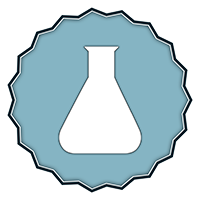Without question, Thanksgiving is one of my favorite days of the year. It is a uniquely American tradition where families put their differences aside and draw close to each other to enjoy a wonderful meal and give thanks for all of their blessings.
Even with all the controversy surrounding the NFL as of late, many families will be tuning into the football games as part of their Thanksgiving tradition. With nearly all the attention squarely focused on who is standing or kneeling during the national anthem, very few people will be aware of what is happening to the players behind the locker room’s closed doors where film crews are not allowed. Hours before kickoff, many if not most of the football players will get onboard what has become known as the “T – Train.’
The ‘T’ in ‘T – Train’ is an acronym for Toradol, the brand name for the powerful painkiller ketorolac tromethamine. It is a non-steroidal anti-inflammatory drug (NSAID) used for short-term management of moderate to severe pain. Toradol is in the same class of painkillers as Advil and Aleve but far more powerful. When it was approved by the FDA and released to the medical community the drug was indicated specifically for the relief of severe post-operative pain. Although it’s not a narcotic, Toradol’s effects are often compared to morphine by scientists and researchers – it is that powerful and can last for a couple of days.
As I’m sure you are aware, professional sports are very competitive. Football players call lining up on the T – Train just another part of staying on the field. It helps them feel less pain when they step on the field and during the game. In speaking off the record, many players said they felt pressured by team officials to get on the T – Train.
It amazes me how the pharmaceutical industry has taken over college and professional sports. I am a tenth degree black belt. In my youth I competed for years in national and international Karate tournaments. We’d train and spar for hours upon hours for days on end to prepare for the competitions. Our bodies were savagely beaten. The kicks and punches took a heavy toll on everyone involved. We relied on Tylenol for pain relief. Anything more would have masked serious injury.
And that is exactly what is happening in the NFL today. Players are so doped up on game day that their injuries can take a day or two to surface. The NFL’s answer to this issue, like so many other sports franchises and many of our doctors here in America, is opioids.
As a former professional athlete, this is what I find so incredulous about professional sports today. The people at the top are so fixated on revenue and brand image that they completely overlook the athlete’s health. For example, an NFL player can be suspended for a minimum of four games for taking banned performance enhancement drugs (PED). However that same player can take as many opioids as he wants leading up to and including game day and be a starter. It’s been said that team doctors hand out opioids in the back of the training room with complete disregard for addiction.
The NFL’s hypocrisy is palpable.
According to future Hall Of Famer Calvin Johnson, addictive opioids were, until recently, handed out “like candy.” In an interview with ESPN’s “E:60” Johnson said, “If you were hurting, then you could get them. It was nothing. I mean, if you needed Vicodin, call out, ‘My ankle hurt,’ you know. ‘I need, I need it. I can’t, I can’t play without it,’ or something like that. It was simple. That’s how easy it was to get them. So if you were dependent on them, they were readily available.”
Former San Diego Chargers offensive tackle Shane Olivea took a different route. His opioid addiction become so strong that he ended up bypassing the team doctor and secured opioids from his own outside sources – even one in Mexico. Olivea told The Columbus Dispatch that he was high every day following his rookie year with the San Diego Chargers. “At my height on Vicodin, I would take 125 a day.” He said doctors told him he was lucky to be alive.
I find it so difficult to believe that a professional athlete could be high day in and day out around hundreds of team mates, coaches, doctors, trainers and other football personal, for months at a time, with not one person noticing. It sounds more like ‘turning a blind eye’ to me. However this phenomenon does explain why retired professional football players are four times more likely to become addicted to opioids than the average person.
Chronic pain is a serious matter for far more people than just professional athletes. Millions of people suffer everyday from the disabling affects of chronic pain. There are many people who just cannot get relief from their devastating pain without opioids. For years I’ve said we’ve become a pill society – one that has been led to believe there is a pharmaceutical fix for everything that ails us. However, it is just prudent that we challenge big Pharma’s ethos and examine several safer courses of action that can be taken before we flood our vital organs with these toxic and often deadly opioid painkillers. There are two alternative medicine therapies that have been proven effective in relieving pain and have entered into the mainstream of modern medicine.
Acupuncture has been successfully practiced for literally thousands of years. Some experts believe it originated around 100 BC in China while others suggest it could have been practiced earlier. It has always had a following China but more recently became popular in the US, Europe and Australia. In Europe, acupuncture is one of the most common alternative medicine practices. Acupuncture is used to treat a wide range of conditions and is commonly used domestically for pain relief.
Acceptance of Acupuncture in the U.S. became official in 1992 when Congress created the Office of Alternative Medicine. The National Institutes of Health (NIH) declared support for acupuncture for some conditions in November 1997. More than 14 million Americans reported in the early 2010s that they have used acupuncture as part of their health care. In the last few years, academic medical centers – such as those located at Harvard University, Stanford University, Johns Hopkins University, UCLA and others – now offer acupuncture mostly through CAM centers or anesthesia and pain management services.
The National Institutes of Health (NIH) has this to say regarding the efficacy of acupuncture; “Results from a number of studies suggest that acupuncture may help ease types of pain that are often chronic such as low-back pain, neck pain, and osteoarthritis/knee pain. It also may help reduce the frequency of tension headaches and prevent migraine headaches. Therefore, acupuncture appears to be a reasonable option for people with chronic pain to consider.”
Another alternative medicine steadily gaining popularity in the U.S. is chiropractics. Compared to acupuncture, chiropractics is a much newer therapy. It was founded in 1895 by Daniel David (D.D.) Palmer in Davenport, Iowa. He opened the Palmer School of Chiropractic in 1898. His son, Bartlett Joshua (B.J.) Palmer, took over the Palmer School in 1906, and rapidly expanded its enrollment. By the 1930s chiropractics was the largest alternative healing profession in the U.S. Although it was a tremulous journey, chiropractics has gained more legitimacy and greater acceptance among conventional physicians and health plans in the United States in the last few decades.
According to the National Institutes of Health (NIH), a 2007 National Health Interview Survey (NHIS), which included a comprehensive survey of the use of complementary health approaches by Americans, found that more than 18 million adults and nearly 3 percent of children (more than 2 million) had received chiropractic or osteopathic manipulation in the past 12 months.
Patients are finding relief from pain through chiropractics. On the NIH website I found an analysis of the use of complementary health approaches for back pain, based on data from the 2002 NHIS. The study revealed that chiropractic was by far the most commonly used therapy. Among survey respondents who had complementary health approach therapies for their back pain, 74 percent (approximately 4 million Americans) had used chiropractic. Among those who had used chiropractic for back pain, 66 percent perceived “great benefit” from their treatments.
Like dealing with any professional, your results can vary by practitioner. When seeking out an acupuncturist or chiropractor it is always a good practice to ask them about their education and license. Also ask for references from people in the medical profession, friends and relatives. There are sites online that you may find helpful as well.
I seriously doubt we’ll see professional sports adapt alternative medicine anytime in the near future. Although alternative medicine is effective at treating the core of the pain, opioids can mask it and get the player on the field faster. But sports franchises have concerns – revenue and image – that you do not. I think you’ll find the effort you put into examining alternative medicine well worth the time.
In closing, I would like to wish you, your family and friends a warm and blessed Thanksgiving.
John Giordano, Doctor of Humane Letters, MAC, CAP, is the founder of ‘Life Enhancement Aftercare Recovery Center,’ an Addiction Treatment Consultant, President and Founder of the National Institute for Holistic Addiction Studies, Chaplain of the North Miami Police Department and is the Second Vice President of the Greater North Miami Beach Chamber of Commerce. He is on the editorial board of the highly respected scientific Journal of Reward Deficiency Syndrome (JRDS) and has contributed to over 65 papers published in peer-reviewed scientific and medical journals.


